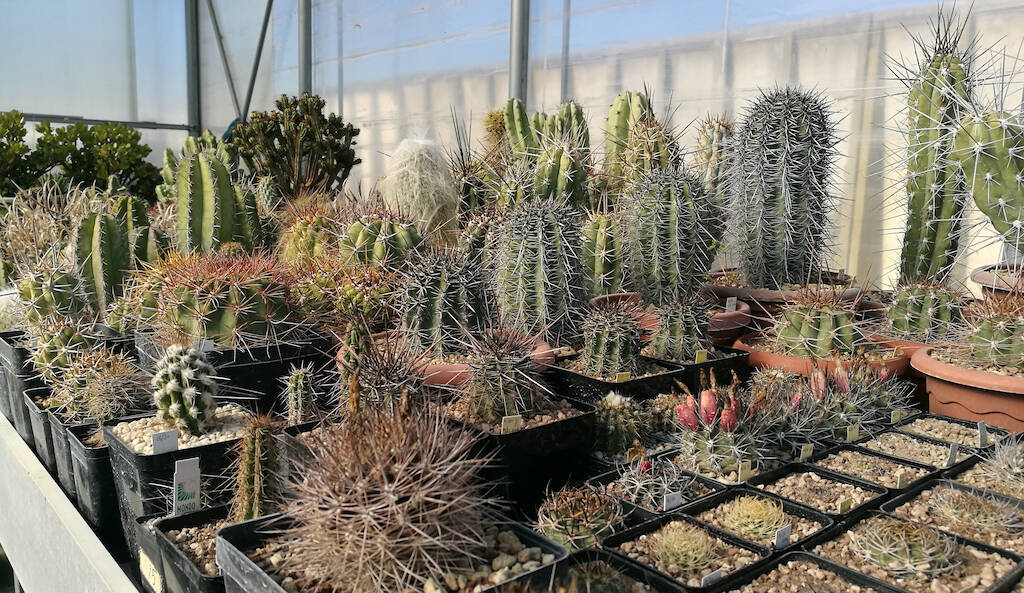Bright blooms, fleshy and brand-new leaves, sparkling spines sprouting from the vegetative apices: for succulent plants, spring represents a real rebirth. Here in Europe, the vegetative stasis that characterizes the winter of most succulent families ends between the second half of February and the beginning of March, when the plants gradually resume vegetation and reactivate the root system. For some families, the restart is evident: this is the case of Cactaceae, which already in February show new spines and often the first flower buds (genera such as Stenocactus, many species of Turbinicarpus, some Mammillaria, etc.). Also, leafy succulents such as Crassula, Echeveria, Portulacaria, Aloe, Adenium are well-known for producing new shoots, new branches and leaves. For other species as the Agavaceae family, the recovery is less evident: it slowly forms fresh sprouts at the centre of the apical rose, destined to be noticed only in a few months, when the separation of the true leaves will take place. Whether the recovery is sudden and flashy or slow and hidden, in March it’s essential to devote some extra care to succulents: in this way, it will be possible to obtain healthy and robust plants that show their full potential development and flowering.
Now let’s see everything we can do at this time of the year, especially if we don’t have a greenhouse and we grow on the windowsill, on the balcony, on a terrace or in the garden. With a warning: whatever you have to do, with succulents and cacti, you must not be in a hurry: hurry to water, hurry to treat, hurry to move the plants… Getting caught up in the rush, the anxiety, the fear of doing something wrong, is the best way to run into mistakes. So let’s see how to avoid them. (…)
Check the plants
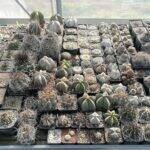
The first fundamental action in spring is to check the plant carefully for detecting any traces of bacterial diseases (dark spots caused by fungi) or parasites (particularly the mealybug/cochineal). In the first half of mid-March, even with healthy plants, it’s however advisable to carry out some preventive treatment by spraying stems and leaves with a specific pesticide (against mealybug and spider mite) and, about ten days later, with a broad-spectrum fungicide (attention: copper oxychloride should be used only when the plants are in stasis, so from March should be suspended). Both treatments – pesticide and antibacterial – must be repeated a fortnight after to ensure complete coverage of the plants.
Give as much air as possible
When the minimum temperatures have settled at 10/12 degrees, it’s essential to give succulents as much air as possible. Plants that have overwintered indoors (except for some species, a thing to avoid!) or in cold but closed environments such as a basement, a garage or a veranda should be moved outdoors and placed on windowsills, terraces, balconies. If plants have been overwintered outdoors, protected by sheets or layers of non-woven fabric, they should simply be uncovered so they can benefit from all the possible air. In these cases, it’s necessary to pay attention to the weather because prolonged rains in a period characterized by not yet high temperatures can be dangerous for succulents, which do not tolerate water stagnation in the soil and excessive humidity. The plants must be placed on a balcony or terrace protected from the rain or covered by a roof.
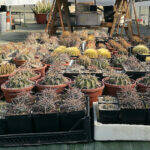
The sudden changes in temperature that characterize spring, with daytime highs above twenty degrees and nighttime lows that can drop sharply below ten degrees, should not worry: in nature, almost all succulents are exposed to similar conditions and indeed greatly benefit in terms of growth and flowering. Exceptions are succulents coming from areas close to the Equator, such as those from Madagascar (Adenium obesa, but also Uncarina, Alluaudia and Pachypodium) or some cacti coming from tropical regions of South America, such as Melocactus, Discocactus, Epiphyllum, Schlumbergera, Rhipsalis: these species need minimum temperatures not lower than 15-16 degrees and to be moved outside only later, in late spring.
Air is of fundamental importance for any plant, even more so for succulents, which do not tolerate environmental humidity nor water stagnation in the substrate. In open-air, the soil dries faster, the stems can transpire effectively, and the risk of bacterial attack is significantly lowered. Tight, closed environments without air exchange are to be avoided, especially in spring and summer, when succulents are in full vegetation, and their tissues are swollen with the water that constitutes their water reserve, and it is, therefore, necessary that the soil dries quickly after the plant has absorbed the liquids it needs.
Exposure: getting plants used to it
Closely related to air is exposure to the sun. In spring (in march), it’s necessary to provide succulents with more light to encourage proper development of tissues, leaves and thorns and at the same time encourage flowering. Be careful, though: as with all plants, succulents (including Cactaceae) need to be grown gradually. Moving a plant that has spent the winter indoors outdoors and immediately placing it in full sun can be dangerous even for the most “fierce” and thorny cactus, which will suffer sunburn and stem discolouration. We will have to gradually accustom the succulents to the light, which becomes more and more intense in spring, exposing them to direct sun a little at a time. From the middle of March, it will be sufficient to place succulents on a windowsill exposed to the South or Southeast (exposure to the North is to be avoided because it does not provide enough light), or on a balcony, a terrace or directly in the garden, taking care, however, to place them in the shade of outdoor plants that will act as a screen to sunlight. Alternatively, it is possible to protect succulents with a simple gardening net or with a piece of mosquito net properly fixed to braces or supports and able to screen at least 30-40% of sun rays.
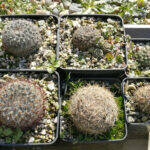
In the shade of other plants or screened by shade netting, succulents will gradually get used to direct sunlight, and within a month to a month and a half, you can bring them to the foreground or remove the shade netting. As far as exposure is concerned, it’s still important to know the needs of our succulents since there are genera that tolerate intense sun and others that prefer a little shade (like many species of Euphorbia or Haworthia, for example). When in doubt, it is good to provide succulents with bright light all day long, exposing them to direct sun rays only during the morning, not later than midday. In this way, it’s possible to avoid sunburns and to guarantee the necessary light for the best growth. Particularly for cacti, which will continue producing “important” and not stunted thorns and at the same time keep compact and harmonious stems. When we have a better knowledge of our plants and have learned their needs, we can be more “targeted” when they come to exposure and give the various specimens the right amount of direct sun (for example, in the case of almost all cacti).
To learn how to distinguish succulent plants and know their needs, you can read this article dedicated to classification.
Resume watering
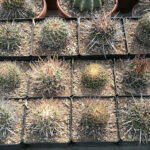
As the exposure to light, which should be gradual, watering should be increased little by little. During the winter, watering should be suspended for almost all succulents, while in spring it’s necessary to accompany the resumption with initially moderate and then more sustained watering. As spring approcaches, in March (weather permitting) a couple of waterings will be enough, while in April, it will be possible to go up to one watering every ten days, making sure to wet well all the soil. From May, you can further increase the watering, reaching one per week. Be sure that between one watering and the other, the loam can dry completely. As always, the advice with succulents is not to overdo it: it’s easier for a succulent plant to die from too much water than from thirst. Consider that these plants are xerophytes, evolved to deal with long periods of drought: when in doubt, it’s a good idea to postpone watering. For regulating the frequency of watering, it’s fundamental also the composition of the soil: here, you will find the “recipes” of various substrates that I have tested over the years.
Fertilize: which products to use
With the arrival of spring and the increase in watering, it’s beneficial to fertilize (or “manure”) succulent plants to promote balanced growth and encourage flowering. As for any other plant, fertilizing is essential to replenish the soil with nutrients that are lost. However, you have to use a specific fertilizer for succulents and not rely on universal products or, worse, calibrated for other plants, such as orchids or horticultural. Wrong fertilization, both in terms of the type of product and frequency, can cause severe damage to the plant and compromise its growth, arriving, paradoxically, to weaken it, as well as deform the stem. Therefore, it’s necessary to limit fertilization (I am very stingy in this regard: two or three fertilizations per year, at most), to be administered by simple watering diluting the product in water, to a maximum of once a month from April until mid-June at the latest, with a further pass in September, before the plants slow down the vegetation.
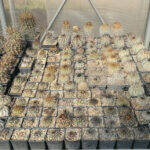
As for the product, on the market, there are specific fertilizers for succulent plants, and generally, high-quality products have correct ratios between the various macroelements. Knowing how to interpret the label, however, is the first step. Basically, it is sufficient to verify that the level of Nitrogen (indicated with the initials “N”) is considerably lower than that of the other two macro-elements that make up all fertilizers for plants, namely Phosphorus (indicated with the letter “P”) and Potassium (“K”). As an indication, a good fertilizer for cacti and succulents should have 1 part Nitrogen, 2 or 3 parts Phosphorus and 4 or 6 parts Potassium. The dosages indicated by the various manufacturers are variable, but it will be enough to keep these proportions in mind to choose the correct product. According to the most commonly used formulations, we can have a ratio of 6-18-36, or 5-15-30, where 5 stands for the Nitrogen dosage, 15 for the Phosphorus one and 30 for the Potassium one. Balanced fertilizers are to be avoided, those with equivalent dosages of the three macroelements (for example, 10-10-10). In addition to the three macroelements, a good fertilizer for succulents should not lack the so-called mesoelements and microelements, such as calcium, magnesium, sulfur, manganese, boron, copper, zinc, iron, which contribute to a balanced development of the plant in various aspects: root system, stems, thorns, flowering, disease resistance.
For the dosage, it will be sufficient to refer to the indications on the package, taking care to halve the quantities in order not to overdo the fertilization, since succulents are extremely adaptable plants with few needs in terms of nutrients, many of which are already present in the growing medium.
If you want to learn more about fertilization, you can read this specific article.
Don’t be in a hurry
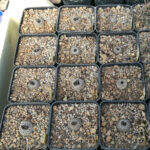
In closing, by my experience and the constant contacts I have with readers and enthusiasts who ask me for advice, I would like to reiterate the concept expressed at the beginning of this article: with cacti and succulents, don’t be in a hurry, never anxious. Our plants are more robust and tolerant than we think: let’s make their time our own and not let ourselves be led by the frenzy of wanting to give them excessive attention. Let’s limit ourselves to the correct care and respect their times, which are decidedly less hectic and anxious than ours, remembering that the border between passion and obsession can be thin…
SUBSCRIBE TO THE SITE – If you liked this article, subscribe to the site to have access to all the contents for one year or three months depending on the formula you choose. Here you will find terms and conditions.
SUBSCRIBE TO THE NEWSLETTER – If you want to receive the free newsletter every time new content is published (even if you have not subscribed to the site), fill in the fields at this link!
Video
Here is a video of me moving some of my plants outside my greenhouse:
Correlated articles
How to repot cacti and succulent plants
Substrates for cacti and succulents
The correct soil: the materials you can use
© The texts, videos, photos and graphic elaborations of the site “Il fiore tra le spine” are original material and are covered by copyright. It’s forbidden to reproduce them in any way.


